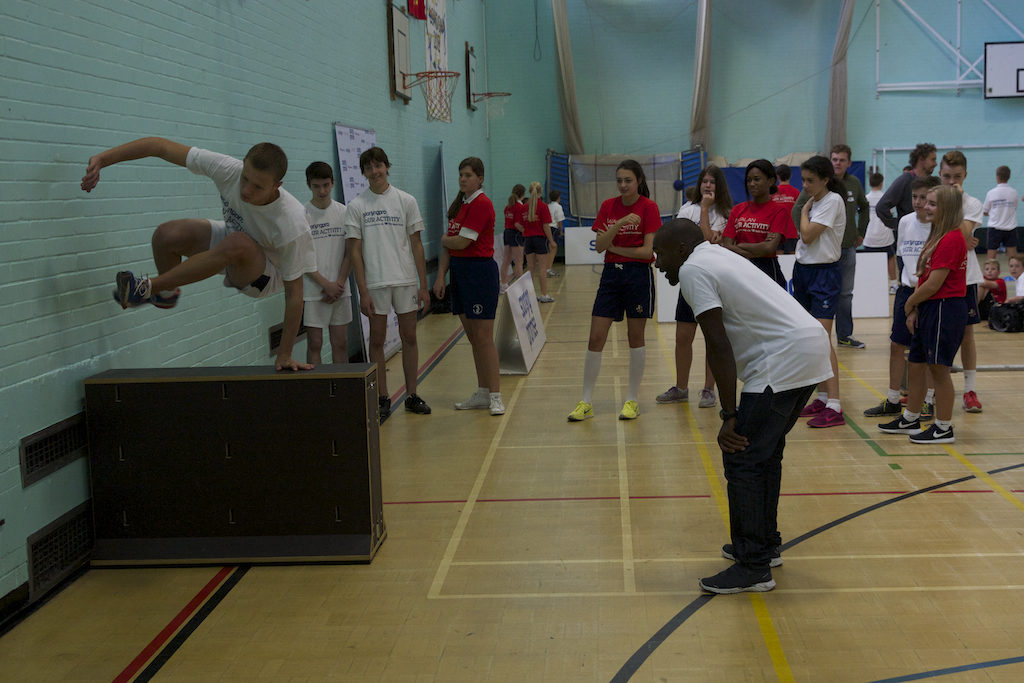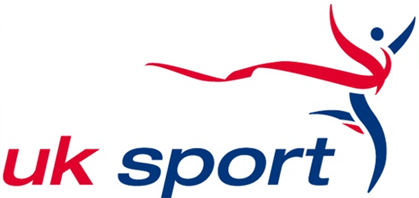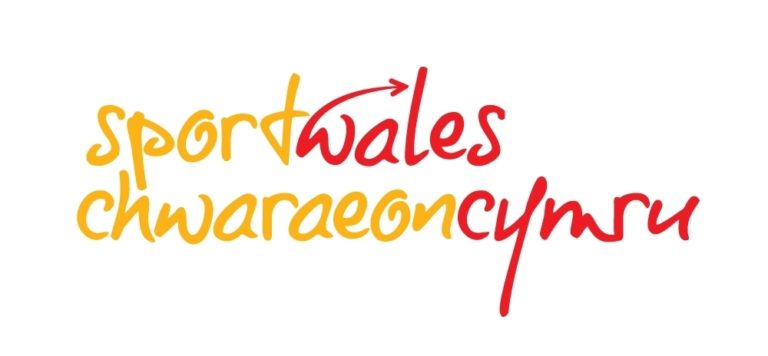
Parkour has been taught in schools in the UK for over a decade and there are many coaches and schools across the country exhibiting best practice.
If you are interested in training for your Teachers please see our 1st 4 Sport Introductory Award in Teaching Parkour Freerunning CPD
Parkour’s inherent principles tend to support development through play for young people. Please see our Play Policy – Parkour in Schools for more details.
Looking at how schools might safely introduce Parkour/Freerunning into their programmes.
The current 2016 edition of Safe practice in Physical Education and Sport, in ‘Outdoor and Adventurous Activities’. Many teachers and students would have come across different versions of activities similar to Parkour/Freerunning, and quite clearly they are very engaging and active pastimes. In this article the specific activity of Parkour/Freerunning is discussed, and information is provided to help teachers who might be considering how to safely introduce Parkour/Freerunning into their programme.
What is Parkour/Freerunning?
The term ‘Parkour’ originating in France in the 1980s, was adopted from 1998. It derives from the French word ‘parcours’ meaning ‘route’ or ‘course’. Used interchangeably, “Parkour, Freerunning, Art Du Deplacement, is the non-competitive physical discipline of training to move freely over and through any terrain using only the abilities of the body, principally through running, jumping, climbing and quadrupedal movement.” Whilst there is no set list of moves those that are often practiced are:
What does the activity do?
In sporting terms (as opposed to describing the philosophy of Parkour/Freerunning), it aims to develop the functional strength and fitness, balance, spatial awareness, agility, coordination, precision, control and creative vision that are required to achieve the movement, whilst at the same time aiming to build confidence, determination, self-discipline and self-reliance, and a responsibility for one’s actions.
The footage and pictures I have seen show the activity as being highly dangerous. Is it really something that we can develop safely in schools?
Many students are drawn to this activity as a result of watching exciting clips and films on social media sites. afPE members will know that a great deal of the safe practice guidance has been developed along side the national governing bodies (NGB) of many different sports and activities. Where appropriate, the guidance overlaps and agrees, and in other cases, whilst taking the NGB rules into account, adjustments need to be made to make the guidance ‘school appropriate’. An example of this might be where an NGB could insist on the wearing of certain items of personal protective equipment (PPE) whilst competing in an event led by an NGB, whilst a school could not make the wearing of PPE compulsory for school activities, unless it chose to provide the equipment for everyone.
Parkour/Freerunning is a recognised ‘sport’ by the UK Sports Councils (Sport England, Sport Wales, Sport Scotland, Sport Northern Ireland & UK Sport) & Parkour UK as the recognised NGB for the sport, and has worked with afPE to develop appropriate professional learning to enable Parkour to be carried out safely in schools, delivered by teachers.
Additionally, Parkour UK has a comprehensive section on their website providing detailed information, advice & guidance on Risk-Benefit.
I would like to see some school based Parkour/Freerunning being delivered at my school. Could I bring in a coach, and if so, what can I look for as part of my competency assessment of the coach?
Parkour UK has various Awards, CPD & Qualifications for training and development. The coaching strand is clearly outlined showing the different stages that a Parkour/Freerunning coach can go through. As with most activities delivered by external coaches, for Parkour/Freerunning, schools should be looking for an individual to hold at least the Parkour UK 1st4sport Level 2 Certificate in Coaching Parkour/Freerunning (or the previous QCF equivalent).
In addition to this they should be registered as a Professional member with Parkour UK which provides proof of qualification/s (occupational competence) & Insurances of £10m. Additionally it is recommended a Disclosure and Barring Service check / membership is supplied (NB a DBS certificate is not always required unless the coach is likely to be working alone with a group of students). Parkour UK can provide this service for their organisations/members.
Does holding the qualifications outlines above, enable the coach to deliver the Parkour/Freerunning session alone?
In a curriculum setting, it is ideal for a (PE) teacher to work alongside a coach as part of their on-going professional development and as part of the process of them becoming qualified. The teacher retains responsibility for the class the coach is working with. If therefore the teacher decides to allow the coach to work ‘at a distance’ from the them, this should only happen after a period of observation and competency assessment has been carried out. ‘At a distance’ means that the responsible teacher is easily and quickly on hand to intervene or help out should the need arise. (See Safe Practice in PE and Sport for more information).
If as a specialist PE teacher I decide that I would like to qualify to deliver Parkour/Freerunning in school, what routes can I take?
As shown in Parkour UK’s Awards, CPD & Qualifications, qualified teachers (QTS), wishing to teach Parkour/Freerunning during curriculum time or as an extra-curricular activity, need to undertake the Parkour UK 1st4sport Introductory CPD Award in Teaching Parkour/Freerunning (QTS). This enables them to deliver the activity in private spaces such as the PE Hall or playground using appropriate equipment and/or purpose-built equipment.
Alternatively teachers can take the NGB coaching route by completing the Parkour UK 1st4sport Level 1 Award and Level 2 Certificate in Coaching Parkour/Freerunning (QCF).
So non-specialist PE teachers are able to access these awards?
Yes, as above, teachers with QTS can access the Parkour UK 1st4sport Introductory and/or Intermediate CPD Award in Teaching Parkour/Freerunning (QTS). afPE is currently considering whether this award could also be undertaken by those practitioners who have completed the afPE Level 5 Certificate in Primary School Physical Education Specialism and Level 6 Award in Primary School Physical Education Subject Leadership.
What about non –QTS staff, could they safely contribute to the teaching of Parkour/Freerunning in schools?
As shown in Parkour UK’s Awards, CPD & Qualifications, Teaching Assistants/Lunchtime Supervisors who have completed ther the Parkour UK 1st 4sport Level 1 Award in Assistant Coaching Parkour/Freerunning (or the previous NQF or QCF equivalent), can assist teachers or coaches in school.
What about students’ progression out of school?
Teachers delivering Parkour/Freerunning in school, may wish to signpost students to the other awards which are available to them as shown in Parkour UK’s Awards, CPD & Qualifications, depending on their age.
Where can I access these qualifications, and how can I be sure they are being delivered by qualified staff ?
Any professional development in Parkour/Freerunning should be endorsed by Parkour UK and delivered by a Parkour UK Educator, who will hold at least the 1st4sport Level 3 Award for Tutors and Assessors in Sport or an equivalent such as PTLLS, DET etc.
For information about any of the professional development covered in this article contact info@parkour.uk.
Where can Parkour/Freerunning be taught?
In most cases, where Parkour /Freerunning is delivered in schools, it takes place indoors. This will also be dependent on the type of qualification that is held by the teacher/coach.
Whilst some existing indoor PE equipment can be used, purpose built Parkour equipment can be purchased from a number of suppliers. Purpose built and ‘portable’ Parkour/Freerunning facilities are also available, these should comply with the European Standard for Parkour Equipment, BS EN16899:2016. Teachers should avoid improvising with existing equipment other than those items that have been deemed suitable for this activity. Guidance on this can be sought through enquiring to Parkour UK or attendance at one of their courses, or from a qualified Parkour/Freerunning coach.
(Updated March 2018)




